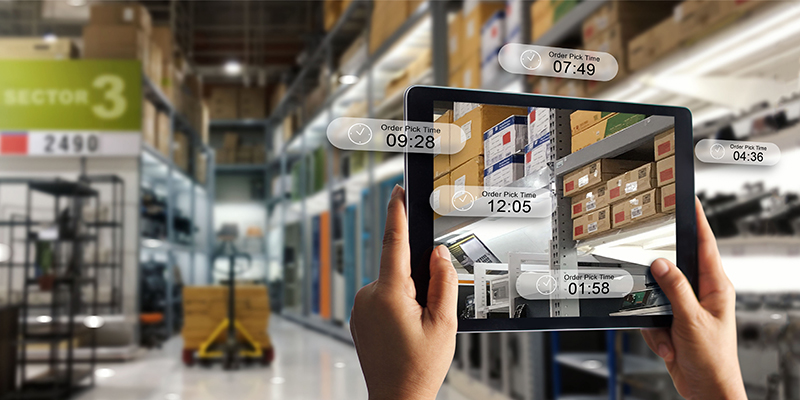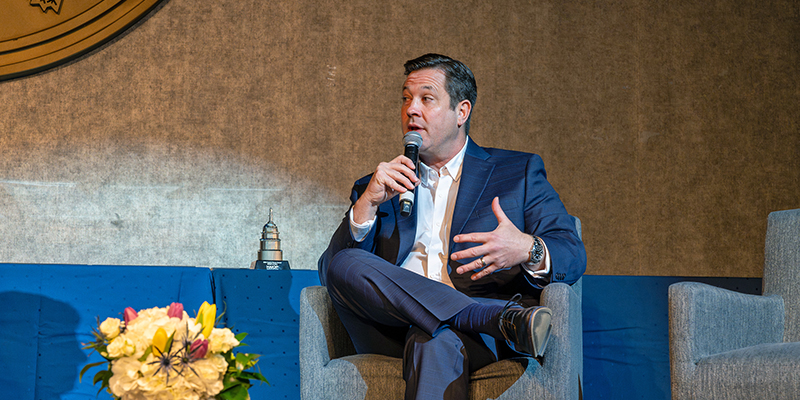Creativity, consumer focus and customized technology are keeping retailers strong during a pandemic that saw many people turning to e-commerce for their shopping needs.
New services such as curbside concierge, where a customer can shop online at multiple stores in a shopping center and pick up everything in one stop, are keeping malls relevant, explained Colin Shaughnessy, executive vice president of U.S. leasing for Unibail-Rodamco-Westfield, during a panel discussion at CRE.Converge Virtual 2020. By providing online queuing options, Shaughnessy said shoppers feel safe and appreciate knowing they will receive personal attention. “In order for us to help our luxury retailers, we built freestanding structures outside their stores that they could staff for one-on-one engagements with consumers who made appointments.”
Curbside pickup has been instrumental for grocery stores, whose sales have remained constant through the pandemic, according to Gerald Crump, senior vice president and director, central region, of Weingarten. “Some nonessential businesses in our shopping centers closed, but grocers remained open,” he said. “Long before the pandemic, we started working with stores to implement online ordering and curbside pickup, but during the pandemic, we reached out to find ways to make it even more convenient for consumers.”
Retailers such as Target, Walmart, Kroger and Whole Foods all use mobile apps to improve the customer experience, and many retailers are investing in digital enhancements such as cashless checkouts to avoid contact with touchpads other shoppers have touched, and shopping carts with scanners that read bar codes as you drop items inside so you pay electronically without having to go through a checkout line. Retailers have also improved their ability to convert brick-and-mortar sales to online sales; if an item isn’t in stock, they can order it instantly to be delivered to the store or directly to the consumer’s home. “If consumers put a high value on these technologies, more retailers will follow,” Crump said.
These technologies are a must in the new COVID-19 environment, emphasized Shaughnessy. His shopping centers have implemented touchless smart parking and capacity counters. “Most shopping centers are limited to 25% capacity right now. You can go online to see what the capacity is before you visit.”
The retailers who are succeeding during COVID-19 were likely doing well before the pandemic, and those that are struggling now were probably already struggling, said Randi Nolan, executive vice president for global transformation at Global Brands Group. “Retailers who are winning are upping their game, but they were already engaged with their consumers and knew how to authentically connect.”
Nolan also noted the importance of looking at new segments of the consumer market. For example, Global Brands Group entered the adaptive space by launching Juniper Unlimited, an inclusive e-commerce marketplace designed for people with disabilities. “There are over a billion people worldwide with disabilities, who have $1.2 trillion in disposable income, but most companies do not even consider these consumers when they’re designing products and services,” Nolan said. “We’re working with companies to help them understand these consumers and how they can broaden their thinking.”
Generation Z is another consumer group that companies will need to adapt their approach to serve. “Gen Z cares about purpose and is willing to pay for purpose and get behind companies that have a purpose,” Nolan explained. “We’re seeing a shift as retailers realize this. The Gen Z market segment will be the same size as millennials within the next five years. Those companies that recognized the need to pivot to purpose will be ahead of the game.”
This post is brought to you by JLL, the Social Media and Conference Blog sponsor of NAIOP’s CRE.Converge Virtual 2020. Learn more about JLL at www.us.jll.com or www.jll.ca.















